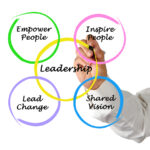 By: Abbie Buck
By: Abbie Buck
These four strategies can boost diversity in your organization and in your executive ranks, this Silicon Valley CHRO writes.
Less than half of all startups in the United States have at least one woman in the C-suite or on the board of directors, according to Silicon Valley Bank’s 2020 gender gap report. That’s not just disappointing progress, it’s also bad business, as research has shown that companies with more female executives are more likely to outperform less diverse companies, McKinsey reports.
The causes of this lack of diversity are varied and complicated, and the pandemic ismaking it worse by pushing many women out of the workforce due to childcare demands. It’s a complicated problem, but the path toward remedying the situation doesn’t have to be.

Author Abbie Buck
At Collective Health, our C-suite is 43% female and our workforce is 53% female. Because we are a health tech company working to provide frictionless healthcare benefits, it’s imperative that our workforce reflects the population we serve and that our leadership reflects both. Our work is at its best only through hiring, retaining and promoting a diverse set of perspectives so that we may better serve our customers.
Sadly, this is not the case at many companies. Even those that have diverse workforces too often have a lack of diversity in senior leadership. Progress in the latter area has been especially slow. More than a third of the companies in a McKinsey recent survey have no women at all on their executive teams.
A Tested Model for Creating Gender Equity
By having ambitious goals, placing a premium on creating diverse pipelines of candidates and investing in tools to foster a diverse workforce–all backed by a supportive CEO–our model for creating gender equity in Silicon Valley is one that any company can apply.
When we started on this journey toward equality in our company, we began by understanding where we are and where we wanted to get to. We then set ambitious goals for ourselves and began to report out on them annually to the company. This goal setting and accountability went hand-in-hand. It sent a strong message to our company about our values toward diversity, equity and inclusion. It also created focus, starting with the executive team, and galvanized all parts of the business to participate.
Building the Right Candidate Pipeline
The next step we took was ensuring we have a diverse pipeline of candidates. You have to be willing to slow down, if needed, to build that pipeline before making hiring decisions. This required a strong partnership between hiring managers and recruiting, in particular.
As the company has grown, we have had an opportunity to fill several executive roles. Our CEO and I committed ourselves to ensuring we had diverse slates of candidates for these roles, from both a gender and a race/ethnicity perspective. We insisted that the search firms we worked with help to deliver on this commitment, which they did. We were able to hire phenomenal candidates AND achieve near-gender parity on our executive team, which I’m really proud of.
Finding the Right Tools
We also invested in tools that help enable us to reach our goals. These tools, for example, helped ensure job postings were written in gender-neutral language and helped us conduct targeted outreach and understand conversion rates at all points of the hiring process. This allows us to target efforts to improve. We also use tools throughout the employee lifecycle to serve up behavioral nudges to managers in the moment, for instance, as they’re evaluating performance. Generally, people want to be effective with respect to fostering diversity and inclusion, and technology can be an important enabler.
Shifting to Meet Pandemic Needs
Beyond being the right thing to do, our work to hire more women at all levels of the company has helped us avoid blind spots, especially now during the pandemic. We implemented an innovative set of policies aimed at supporting women during the pandemic so that they could stay in the workforce. We provided enhanced COVID leave benefits, gave the entire company a week of additional paid time off at the end of the year, and enabled work schedule flexibility, including reorganizing shifts within our Customer Experience organization, to accommodate caregiver needs due to school and daycare closures.
The pandemic has created a disproportionate burden on working women. As HR leaders, we hold the power to make a significant impact–but it’s not something one person can do alone. I’m proud to work for a company that is deeply committed to doing its part to retain women in its workforce and is dedicated to engaging authentically with our team members.
As we continue our work to support clients and members, the same diverse points of view and innovative thinking that has helped our own employees will also propel our business forward as we help other companies look for ways to redesign health plans and support unique member needs during the pandemic.
Source: HR executive



